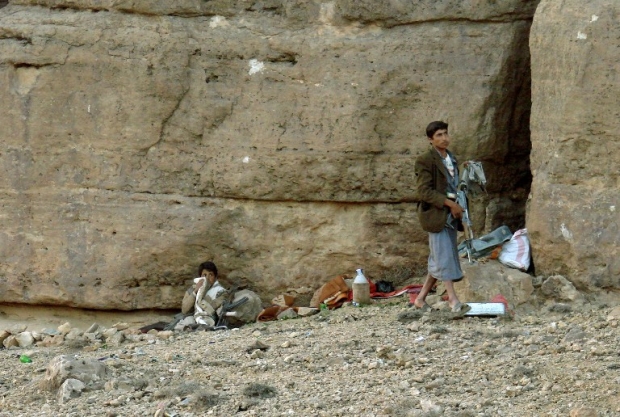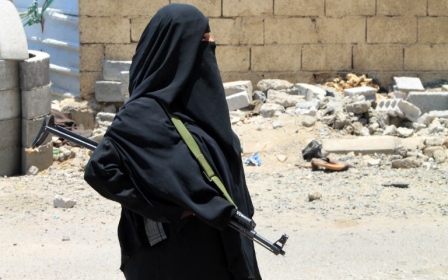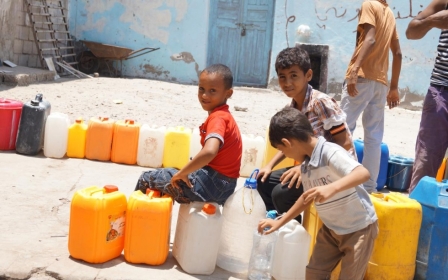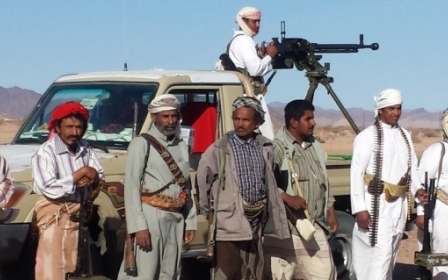Saudi-led airstrikes leave Houthi stronghold in ruins
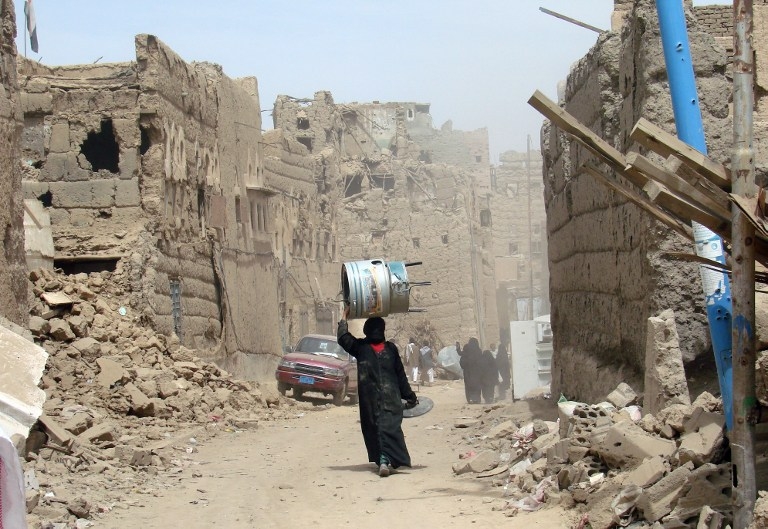
AL MUKALLA, Yemen - Weeks of airstrikes by a Saudi Arabia-led coalition have devastated Yemen’s northern province of Saada, a remote stronghold of the Shiite Houthis who the coalition are trying to drive back.
"The Saudis have decimated Saada. They bombed roads, government buildings, schools and military sites," Muammar al-Thari, the deputy governor of Saada, told Middle East Eye by telephone on Monday.
Al-Thari said the province was a “disaster area,” and that he was sending appeals to international rights organisations to pressure Saudi Arabia to halt the airstrikes.
Aimed at defanging the powerful Houthi movement which last year swept down from the mountains of Saada and seized much of Yemen, the coalition has launched daily air raids since March on military sites that have been overrun by the Houthis, alongside forces loyal to ex-president Ali Abdullah Saleh.
Observers have focused on the fight for the capital Sanaa and a campaign to fend off Houthis besieging the southern port city of Aden. But Saada has received the bulk of the bombing, with fighter jets levelling military camps, bridges, armed vehicles and government-run banks.
"Their campaign is basically to starve the province, cut off fuel and food by bombing oil tankers and food trucks heading to Saada," said al-Thari, who describes himself as a Houthi supporter.
While hitting Saada may weaken the Houthis' military might, analysts say, it will ultimately strengthen their resolve to fight.
"I'd imagine that Saada will remain a Houthi stronghold for the indefinite future; it's their geographical home base, in addition to the home of the bulk of their leadership," said Adam Baron, a Yemen expert and visiting fellow at the European Council on Foreign Relations. "I think there is little, if any, sign that the Houthis are even considering the possibility of surrender."
Al-Thari said he could not confirm a report last week by Human Rights Watch saying it had “credible evidence”, including videos and photographs, that the coalition had used cluster munitions in the province of Saada - the weapons are banned by a 2008 treaty that has not been signed by the US, Saudi Arabia or Yemen.
HRW said the cluster munitions, which were allegedly used in mid-April, appeared to land on a cultivated plateau that was a little over half a kilometre away from villages. The weapons appear to have been manufactured and supplied by the US, according to photographs obtained by the organisation.
Bloody past
Saada was the scene of six bloody wars between the Houthis and ex-president Ali Abdullah Saleh’s forces from 2004-2010 during which indiscriminate bombing – most of which was carried out by the Yemeni government and Saudi Arabia – killed thousands of people, including many civilians, and displaced hundreds of thousands.
After the ceasefire in 2010, the government largely abandoned the province to the Houthis who brought about relative peace and stability. However cities including the provincial capital Saada lay in ruins and lacked basic infrastructure such as schools and hospitals.
When the Houthis expanded their hold on the country in January, dismissing President Abd Rabbuh Mansour Hadi and replacing him with a presidential council, some in Saadah
Local residents say Houthis' political control did not bring improvements to the situation in the province and the latest wave of violence has made thing even worse.
Suffocating to death
Years of neglect compounded by the latest violence has left Saada’s health sector on the verge of complete collapse, Mohammed Hajjar, director of Al Jamhouria hospital in the city of Saada, told MEE.
With the Saudi-led assault cutting off vital supplies to the Houthis, including fuel and medical aid, Hajjar said, hospitals such as his will soon be forced to close.
"Some units like intensive care and kidney dialysis are at risk of being closed due to shortages of fuel and oxygen," Hajjar said.
There are six small hospitals in rural areas and two large ones in the city of Saada, including Hajjar's hospital.
"We usually receive two to three deaths after each wave of airstrikes. Most of them suffocate to death in the wreckage of their houses," Hajjar said.
Most of the foreign doctors – mainly Russian, Syrians and Indians – who were once the backbone of the healthcare sector, have now been evacuated from Yemen.
Years of violence in the province have left its mark on Saada’s children, Hajjar said.
"I have seen growing numbers of traumatised children visiting the psychiatric clinic."
Critics accuse the Houthis of overstating the situation in the province to attract public support, pointing out that other cities like Aden, Taiz and Dhale are also experiencing humanitarian crises.
"Some food is available in the countryside… I think the Houthis are exaggerating the humanitarian situation in Saada to win public support and incite the public against the Saudis,” said a resident who preferred to remain anonymous fearing reprisal.
“The Saudis did not bomb residential areas, rather arms depots and government buildings used by the Houthis to store tanks," he said.
New MEE newsletter: Jerusalem Dispatch
Sign up to get the latest insights and analysis on Israel-Palestine, alongside Turkey Unpacked and other MEE newsletters
Middle East Eye delivers independent and unrivalled coverage and analysis of the Middle East, North Africa and beyond. To learn more about republishing this content and the associated fees, please fill out this form. More about MEE can be found here.


